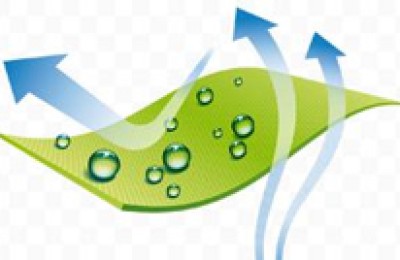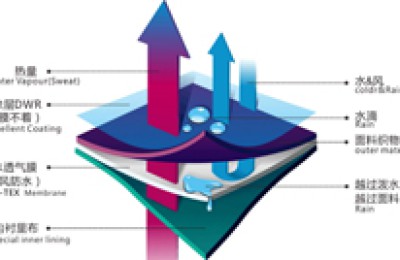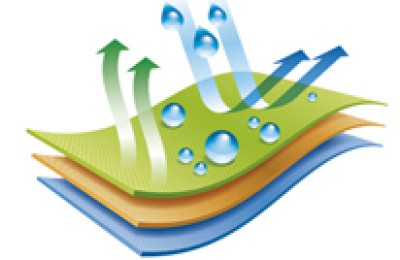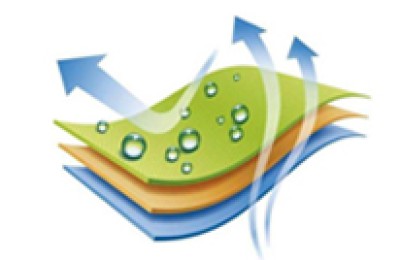In recent years, the domestic polyester market has bottomed out and rebounded. 2011-2012 was the peak period for my country’s polyester production capacity, which led to an imbalance in industry supply and demand. The industry’s production capacity investment rate declined year by year, and fell to the bottom in 2016. With the steady growth of domestic consumption and the continuous upgrading of the structure, the demand for polyester, especially differentiated functional products, has maintained steady growth, and market supply and demand have gradually improved. The industry currently maintains an operating trend of high production, low inventory and high price differences.
The current polyester production capacity has entered a new expansion cycle. Due to low investment intensity and the stimulation of improving product profits, polyester production capacity has returned to the expansion range since 2017. The annual growth rate of polyester production capacity exceeded 10% from 2017 to 2018. As of the end of 2018, the domestic polyester production capacity was close to 55 million tons/year, of which 14 manufacturers had a production capacity of more than 1 million tons/year, accounting for the total production capacity. 66% (see Table 1).
From the current German Barmag and Judging from the waiting period for Japanese TMT Company’s winding head orders, polyester production capacity expansion will continue until the end of 2020. It is expected that 4.8 million tons of new production capacity will be added in 2019, with a total production capacity of nearly 60 million tons/year. New production capacity will be added in 2020 4.5 million tons, with a total production capacity of nearly 65 million tons per year. Compared with the expansion of paraxylene (PX) and terephthalic acid (PTA), the expansion of polyester supply is relatively orderly. Considering the rapid growth in the past two years and the impact of the Sino-US trade war, it is expected that the growth rate of polyester production capacity after 2021 will be dropped to 5% to 6%.
A new market competition landscape is taking shape. Judging from the scale cost, technology R&D level and product differentiation of competition in the polyester industry, Hengli and Shenghong are famous for R&D and differentiation, Tongkun and Xinfengming are famous for scale, and Hengyi and Rongsheng are famous for layout. Mainly in the middle and upper reaches, the above six companies mainly produce polyester filament, Sanfangxiang and Sinopec are temporarily leading in polyester staple fiber products.
At present, polyester and polyester equipment have been fully localized, but the gap in production efficiency and product quality between domestic and imported equipment is still relatively obvious. In the next two years, two overseas winding head suppliers – Germany’s Bama The orders of Gehe Japan TMT are mostly monopolized by three companies, Tongkun, Xinfengming and Hengyi. The competitive pattern of the polyester market has gradually formed a new era of competition among large companies dominated by Tongkun, Xinfengming and Hengyi.
The development path of private enterprises has divided into two camps
Currently, the domestic polyester industry has formed The industry structure is dominated by eight enterprises (groups) including Hengli, Rongsheng, Tongkun, Hengyi, Shenghong, Xinfengming, Sanfangxiang and Sinopec, and is supplemented by a number of small and medium-sized enterprises. In the next 2 to 3 years, the expansion of the domestic polyester industry chain will be reflected in improving the industry chain and pursuing economies of scale, thereby enhancing comprehensive competitiveness and risk resistance.
Rongsheng, Hengli and Shenghong have all shifted their focus to the upstream, leaping from PTA-polyester polyester to the more asset-heavy and large-scale refining and chemical industry, which means that their short-term There will be no spare capacity to expand the polyester industry on a large scale. Therefore, in the next few years, only three companies, Tongkun, Xinfengming and Hengyi, will really focus on the polyester industry. Among them, Tongkun and Xinfengming are industry leaders. These two companies have always adhered to the polyester filament yarn industry. The main business has become more refined and stronger. With its cost advantage, it has also achieved expansion against the trend during the industry trough in the past few years, gradually widening the scale gap with its competitors. In the future, while continuing to expand polyester, it will also extend upstream to realize raw materials. Matching.
Taken together, after the opening of this round of refining and chemical window, in the next three to five years, the six polyester giants except Sinopec and Sanfangxiang have entered two different tracks. If traditional refining and chemical companies do not seize the opportunity to develop, it will not be necessary to continue to make polyester in the long term, and the difficulty will be relatively high.
In the polyester industry, it has become increasingly clear that Tongkun, Hengyi and Xinfengming stand on top of each other. The current total polyester production capacity of the six private enterprises is 20.08 million tons/year, accounting for 37% of the production capacity. It is expected that By 2023, the proportion of production capacity will increase to nearly 50%; the three major private enterprises, Tongkun, Hengyi, and Xinfengming, currently have a total production capacity of 15.1 million tons/year, accounting for 28% of the production capacity. It is expected that the proportion of production capacity will increase to 33% by 2023. .
In this round of refining and chemical expansion enterprises, the downstream PTA market share is very high (about 50%). After the simultaneous expansion of PTA production in 2020, the PX-PTA-polyester industry chain will be highly integrated and industrially synergistic. The competitive advantage brought about will also be stronger. In the future, many small-scale PX and PTA devices with single supporting equipment in China will face elimination. The aromatics-polyester industry chain may eventually move towards an oligopoly structure of the six major oligopolies (see Table 5). Market competition will shift from product competition in the past to industry chain competition. .
</p







